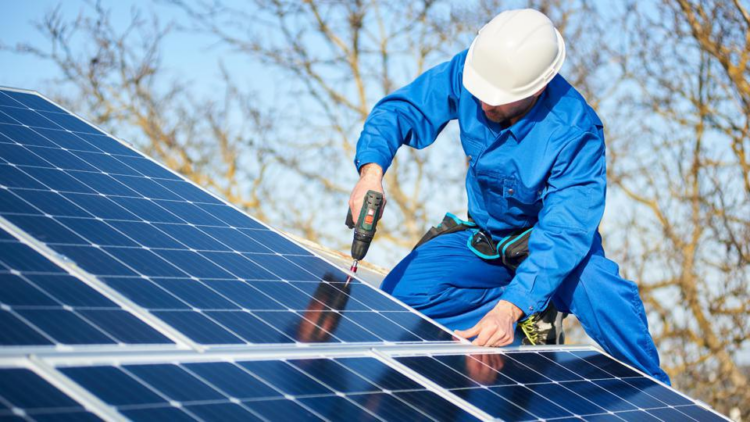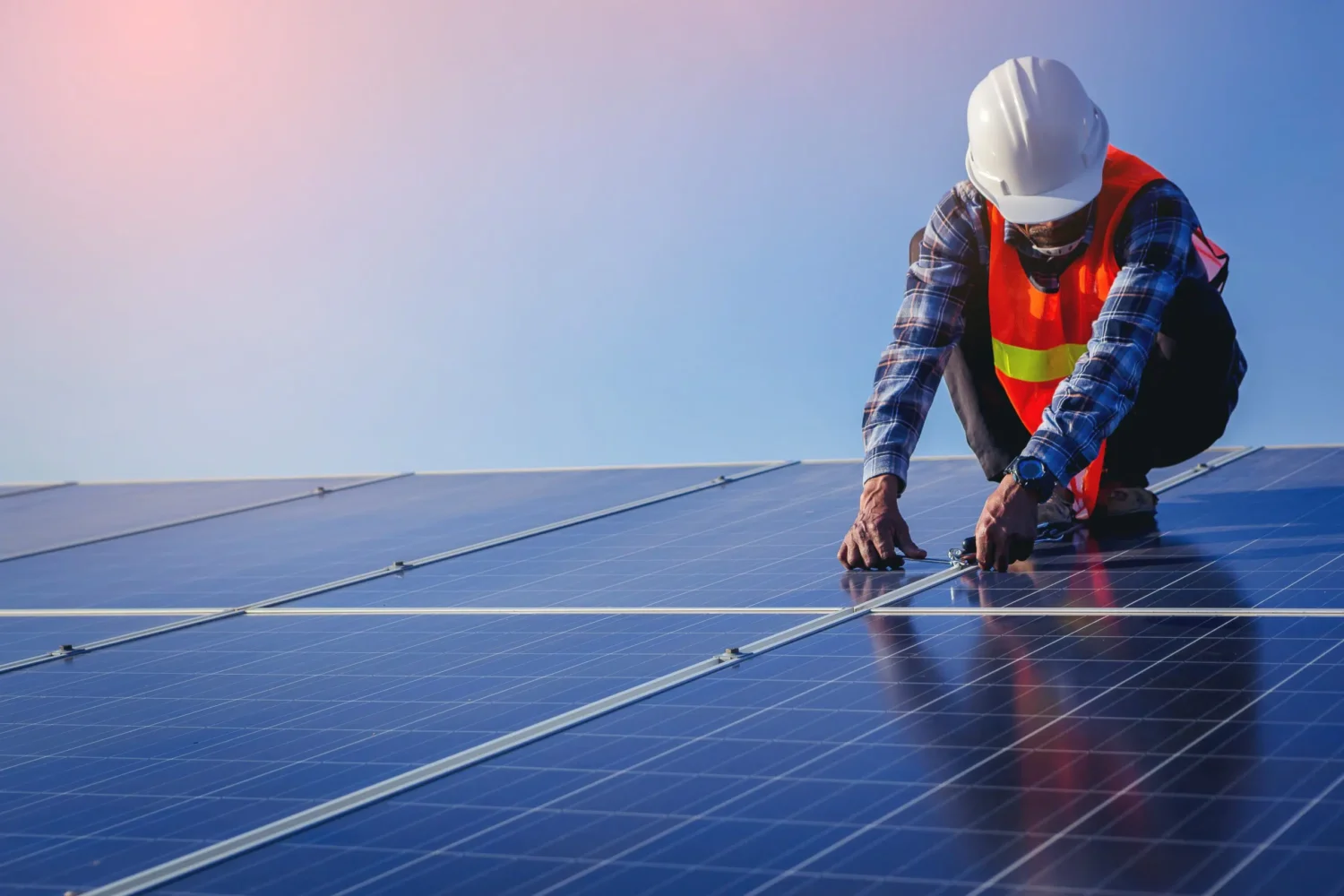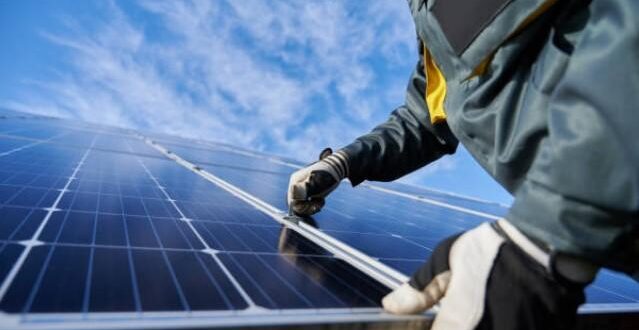Solar energy has become a promising and sustainable power source, gaining widespread recognition in the global transition towards cleaner energy solutions.
Solar panel installation has grown significantly in Canada, known for its vast landscapes and diverse climate.
This blog will give the current state of solar energy adoption in Canada, exploring statistics, trends, available solar panels, climate suitability, incentives, and the future of solar energy in the Great White North.
Overview of Solar Energy Adoption in Canada

Canada has been gradually embracing solar energy as a reliable source of power. The adoption of solar panels has seen remarkable growth over the past decade. According to the Canadian Renewable Energy Association (CanREA), Canada’s solar energy industry had a big year in 2021. It grew by a significant 13.6%, reaching a total solar capacity of 2,399 MW. This was a jump from the 2,111 MW capacity it had in 2020. Additionally, the country added 288 MW of solar power generation capacity through new utility-scale solar projects.
The solar energy sector saw a significant growth of 13.6% in 2021. This solar growth was spread across several provinces in the country. Alberta contributed the most with 250 MW, while smaller contributions came from Saskatchewan (21 MW), Quebec (9.5 MW), Nova Scotia (4.8 MW), Ontario (0.3 MW), Yukon Territory (1.5 MW), and Prince Edward Island had the lowest solar capacity added in 2021, with just 0.1 MW.
CanREA also predicts that Canada’s renewable energy market will continue to grow in the coming years, thanks to the development of many new solar projects.
Solar Installation Growth in Canada
Choosing the right solar panels is necessary for maximizing energy generation in a specific climate. In Canada, various solar panels are available, each with its own characteristics and advantages. These panels can broadly be categorized into two types: monocrystalline and polycrystalline.
Monocrystalline Solar Panels
| Efficiency | Durability | Cost |
| Monocrystalline panels are known for their high efficiency, making them suitable for areas with limited space. | They have a longer lifespan and are often backed by extensive warranties. | These panels are typically more expensive than polycrystalline panels. |
Polycrystalline Solar Panels
| Cost | Efficiency | Space |
| Polycrystalline panels are more budget-friendly and are an attractive option for many homeowners. | They are slightly less efficient compared to monocrystalline panels but still provide a good level of performance. | Polycrystalline panels may require more space to generate the same amount of power as monocrystalline panels. |
Thin-Film Solar Panels
| Flexibility | Efficiency |
| Thin-film panels are lightweight and flexible, making them suitable for unconventional installation methods. | They are less efficient than crystalline panels and are used in commercial or industrial applications. |
Suitability for Various Climates
Canada’s diverse climate presents both challenges and opportunities for solar panel installations. From the frigid winters of the Yukon to the mild coastal climates of British Columbia, solar panels must adapt to varying weather conditions to remain effective. Here’s a breakdown of solar panel suitability across different regions of Canada:
Northern Canada
Northern regions of Canada, such as the Yukon, Northwest Territories, and Nunavut, experience extreme cold and periods of darkness during the winter months. Despite these challenges, solar panels can still be viable with proper installation techniques and considerations.
| Suitability | Solar Panel Types |
|
Monocrystalline panels are ideal due to their higher efficiency in low-light conditions. |
Prairie Provinces
These areas offer excellent solar potential due to their abundant sunshine. These provinces have embraced solar energy with numerous residential, commercial, and industrial installations.
| Suitability | Solar Panel Types |
|
Both monocrystalline and polycrystalline panels work well in these regions. |
Central Canada
Ontario and Quebec, part of Central Canada, have moderate climates with distinct seasons. Solar energy adoption has increased, thanks in part to attractive government incentives.
| Suitability | Solar Panel Types |
|
A mix of monocrystalline and polycrystalline panels is commonly used in this region. |
Western Canada
British Columbia, and parts of Alberta boast milder coastal climates favourable for solar energy production. The proximity to the Pacific Ocean can bring cloudy and rainy days, but solar installations are still feasible.
| Suitability | Solar Panel Types |
| Regular maintenance may be required to keep panels clean and functioning optimally. | Monocrystalline panels are often the ideal option for their efficiency in overcast conditions. |
Atlantic Canada
The Atlantic provinces, including Newfoundland and Labrador, Prince Edward Island, Nova Scotia, and New Brunswick, experience a mix of weather patterns. Solar energy adoption has been steadily increasing as residents seek sustainable alternatives.
| Suitability | Solar Panel Types |
| Solar panels should be oriented to maximize exposure to sunlight during sunny periods. | A combination of monocrystalline and polycrystalline panels is suitable for the region. |
Incentives and Rebates for Solar Panel Installation

As Canada strives to become a net-zero economy by 2050, more rebates, incentives, and tax cuts are being introduced to promote clean energy adoption. We have gathered information on all available federal and provincial solar incentives in Canada, including those provided by energy efficiency programs, major Canadian cities, and large local distribution companies.
The 2024 Budget is committed to introducing investment tax credits for clean technologies like wind, solar, and green hydrogen, positioning Canada competitively in the journey to decarbonize the energy sector.
Below, you can find details on new solar rebates and updated tax credits for your area, empowering you to decide about transitioning to solar and renewable energy.
Federal Incentives and Rebates
The federal government of Canada offers three solar incentives, two for commercial use and one for residential purposes. They also provide investment tax credits for various clean energy sectors.
The Greener Homes Rebate
This initiative allows homeowners to improve their homes for increased comfort and reduced living costs while receiving government grants to contribute to Canada’s net-zero emissions goal. It offers up to $5,000 for installing roof or ground-mounted solar systems, with over 700,000 grants already awarded.
Self-Employed or Commercial
The Accelerated Capital Cost Allowance benefits commercial producers of renewable electricity by reducing their taxable income, and the Canadian Renewable Conservation Expense (CRCE) allows deductions for startup expenditures related to clean energy conservation or generation.
Residential or Homeowners
Another federal incentive offers homeowners up to $40,000 in interest-free loans for environmentally friendly retrofits, including solar panels. This offers free energy audits to identify the most cost-effective upgrades.
Clean Electricity Investment Tax Credit
The Investment Tax Credit (ITC) introduced in the 2022 Fall Economic Statement aims to boost Canada’s competitiveness by supporting clean technologies. It provides up to 30% of the capital investment cost for businesses in sectors like solar, wind power, electric vehicles, clean hydrogen, and energy storage.
Each province and municipality may have specific incentives and financing options, so exploring local programs and determining the best approach for transitioning to solar energy is necessary. Going solar in Canada is becoming more accessible with these incentives and programs, making it an opportune time to switch to renewable energy.
Effectiveness of Solar Panels in Canada’s Diverse Climate

Despite the challenges posed by Canada’s diverse climate, solar panels remain a viable and effective renewable energy source. Modern solar panel technology and proper installation and maintenance allow solar systems to thrive even in harsh weather conditions.
Here are key factors contributing to the effectiveness of solar panels in Canada:
| Factors | Description |
| Snow Management | Properly designed solar panel installations incorporate tilted panels and snow management systems to prevent snow accumulation from blocking sunlight. |
| Net Metering | This allows homeowners to receive credit for excess energy produced during sunny periods, which can be used during cloudy days or at night. |
| Battery Storage | You can store excess solar energy for later use, ensuring a continuous power supply, even during extended cloudy periods. |
| Increased Efficiency | This enables panels to generate more power even in lower light conditions. |
The Future of Solar Energy in Canada
The future of solar energy in Canada holds great promise, with several key trends and developments on the horizon. First, ongoing research and development efforts are expected to produce even more efficient solar panel technology.
Second, advances in energy storage technology, including more affordable batteries, will empower homeowners and businesses to store excess energy for later use, reducing their reliance on the grid.
Third, solar-powered charging stations for electric vehicles are likely to become more prevalent, contributing to a reduction in greenhouse gas emissions. Moreover, continued government support and policy initiatives are expected to propel further growth in the solar energy sector.
Lastly, sustainable and net-zero communities are gaining momentum, with solar energy taking center stage in powering these environmentally conscious developments. These trends collectively paint a bright future for solar energy in Canada, fostering a cleaner and more sustainable energy landscape.
Embracing Solar Energy for a Sustainable Future in Canada
Solar panel installation in Canada has evolved significantly, establishing itself as a sustainable and eco-friendly energy source with a bright future. Supported by various incentives, solar energy is poised to play a central role in Canada’s energy landscape for years.
And finding a reliable solar energy installer becomes pivotal in harnessing clean and renewable energy.
Google Map
 Hi Boox Popular Magazine 2024
Hi Boox Popular Magazine 2024



